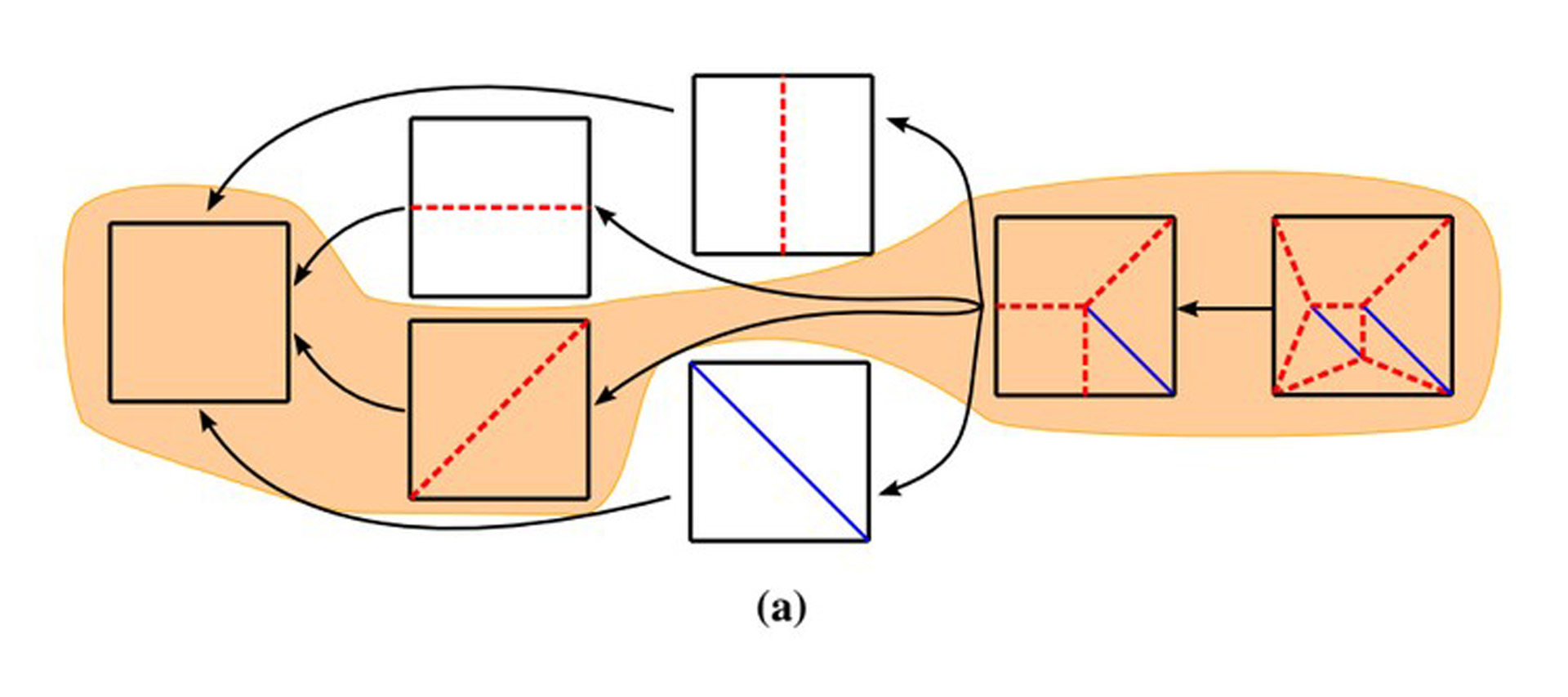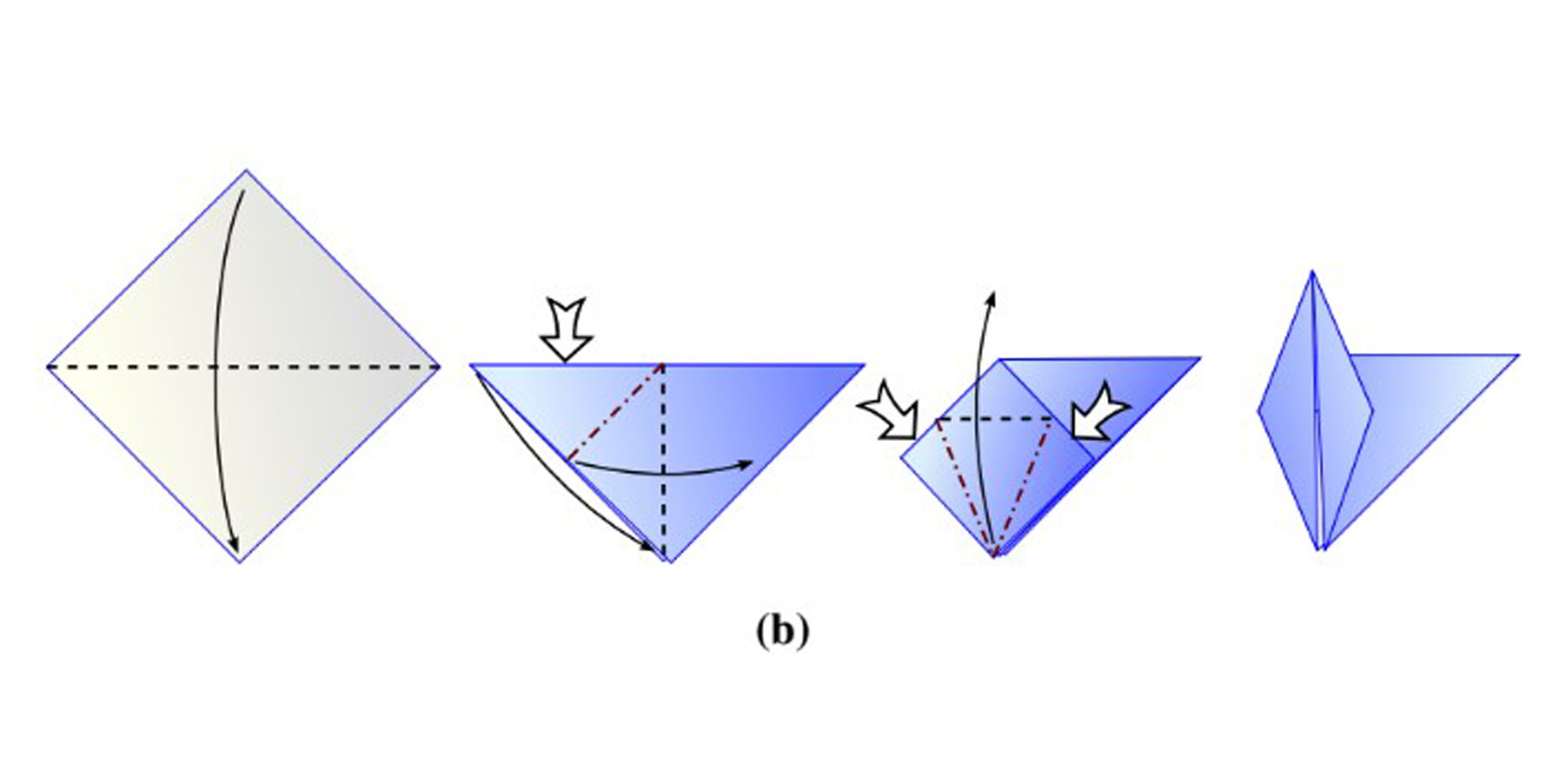“Generating Folding Sequences from Crease Patterns of Flat-Foldable Origami” by Akitaya, Mitani, Kanamori and Fukui
Conference:
Type(s):
Entry Number: 47
Title:
- Generating Folding Sequences from Crease Patterns of Flat-Foldable Origami
Presenter(s)/Author(s):
Abstract:
The most common form to convey origami is through origami diagrams, which are step-by-step sequences, composed of figures that represent the state of the folded paper, in combination with lines and arrows indicating the position of the folds and the movement of the paper (Figure 1b). With the development of modern techniques of origami design, the range of achievable shapes have increased drastically and the crease pattern (the pattern of creases left on the paper after folding an origami model) has gained importance as an efficient method of documenting origami [Lang 2012]. However, the disadvantage of crease patterns is that it is difficult to use them to re-create the design, since crease patterns show only where each crease must be made and not folding instructions.
References:
1. Bern, M., and Hayes, B. 1996. The complexity of flat origami. In Proceedings of the seventh annual ACM-SIAM symposium on Discrete algorithms, Society for Industrial and Applied Mathematics, Philadelphia, PA, USA, SODA ’96, 175–183.
2. Lang, R. J. 2012. Origami Design Secrets: Mathematical Methods for an Ancient Art. Second Edition. CRC Press.
3. Mitani, J. 2007. Development of origami pattern editor (ORIPA) and a method for estimating a folded configuration of origami from the crease pattern. IPSJ Journal 48, 9 (sep), 3309–3317.







